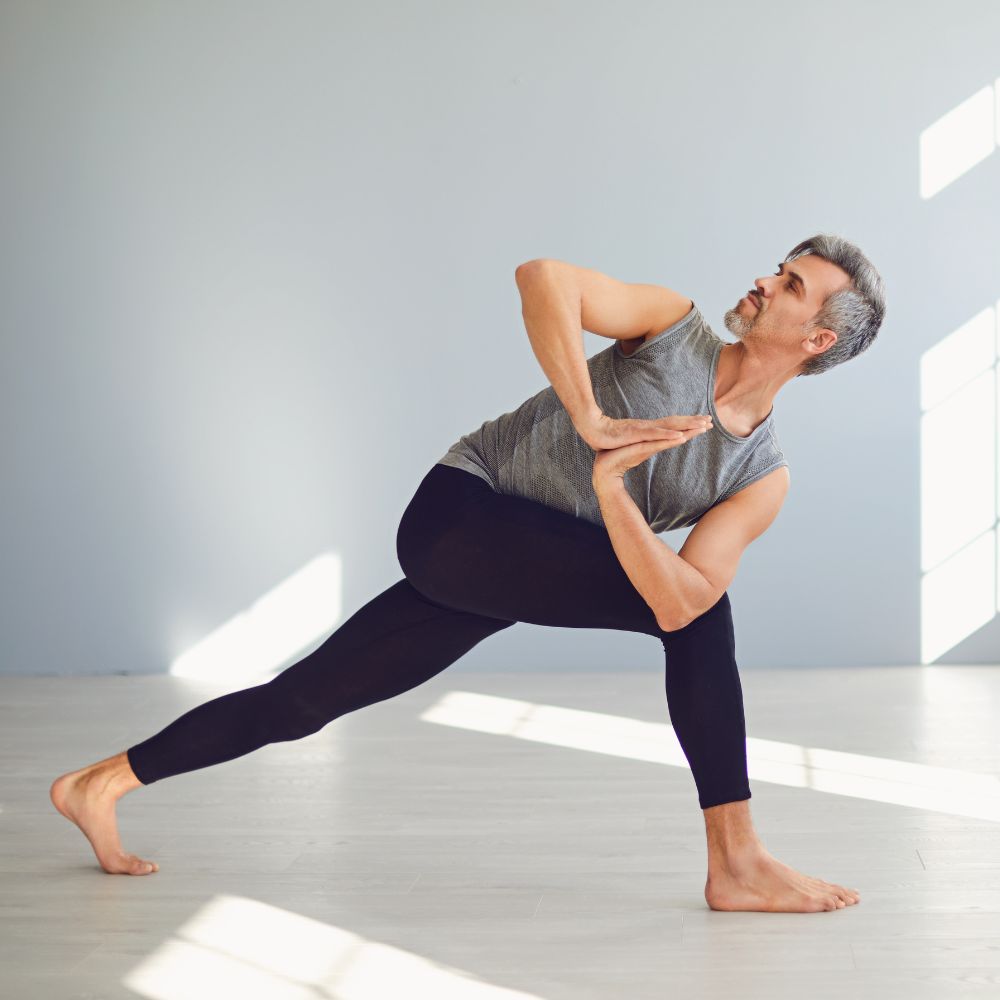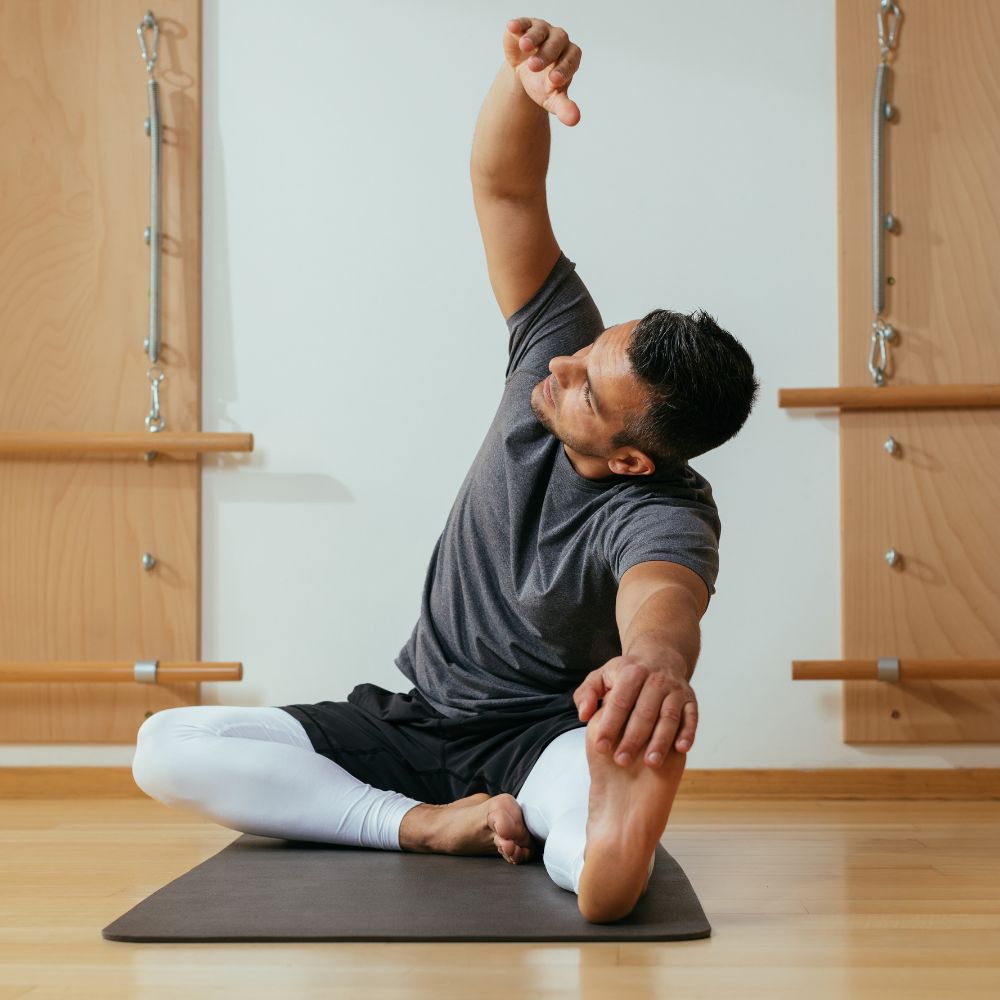Yoga Professional for Pain management
Yoga and Yoga Therapy
Yoga therapy is a growing field that is described as the professional application of the principles and practices of yoga to promote health and well being within a therapeutic relationship that includes personalized assessment, goal setting, lifestyle management, and yoga practices for individuals or small groups.[6]
Yoga therapy is rooted in a salutogenic (health creation) model of care, rather than a pathological (‘fix-it’) model of care. Yoga therapists assist people in pain to progress toward living with more ease and peace by integrating yoga teachings and practices into pain care. It is a process that is empowering for the person in pain, is in line with their values, and supports the therapeutic relationship.
Yoga Paths and Styles
There are many different paths and styles of Yoga. One common path used in yoga therapy includes self-inquiry and introspection, interoceptive awareness practices, breathing practices, mindful movement, self-regulation practices, discernment practices, and practices that connect the person to their own values, meaning, purpose, and essence or spirit. The approach is rooted in philosophy that supports self-compassion, kindness, curiosity, contentment/acceptance, self-discipline/effort, and patience, as a few examples.

Yoga and chronic or persistent pain
Research supports that yoga can help people with chronic or persistent pain, with high level evidence showing improvements in pain, disability, mood, and quality of life.[1,5] We don’t know the exact underlying mechanisms why yoga helps people in pain when it does help. But we do know that pain is a complex phenomenon that is influenced by our physiology, our mental and emotional health, beliefs, culture, environment and past experiences. We know that when pain persists, it can result in changes in our nervous systems, hormonal and immune systems, and also change our thoughts, emotions, relationship to self and others, our sense of meaning or purpose in life, how we move, and even how we breathe.
In other words, pain is a biopsychosocial-spiritual (BPSS) experience rather than a purely anatomical one, so it makes sense that in order to successfully and optimally help people with a complex BPSS issue, we need to take a BPSS approach.[5] Yoga has the capacity to offer this BPSS approach and addresses all aspects of a person within the context of their environment: physical, mental, emotional, energetic, social and spiritual.[1,5]

Examples of some of the yoga practices that are used in pain care to help people in pain
Interoceptive Awareness Practices:
includes body, mind, emotions, breath, spirit.
Concentration and Meditative Practices:
includes regulation of body, mind, emotions, breath.
Breathing Practices:
includes a variety of techniques that can influence any aspect of our existence including the pain experience by: calming nervous systems and reducing threat messages, reducing body tension, changing biomechanics, movement efficiency and overall ease of movement, reducing fear and anxiety or changing other emotions, resulting in increased confidence to move

Movement Practices
Movement can influence pain and quality of life due to its influence on our physiology and psychology. Also, Movement can affect our hormones, immune system, cardiorespiratory and nervous systems, emotional and mental state, behavioral habits, energy levels, body awareness, and of course, our physical tissue tolerance.
Spiritual Practices:
We now know that addressing spiritual health is an important and evidence-informed part of pain care.[1-3, 5] Practices that support one’s values, meaning, purpose and sense of peace and connection in life are inherent in yoga. Yoga is not a religion, but a spiritual path that is inclusive to any spiritual belief or faith. Some say the spiritual component is the unique contribution that yoga offers in pain care.
Yoga Therapists combine the above practices in conjunction with yoga philosophy to support the individual in meeting their needs as they progress toward living a life of more ease and peace.

Finding a Yoga Professional
Finding a yoga professional who is familiar with and trained in current understandings about pain and pain care is important. Outdated beliefs about pain by any health professional may lead to messages that the body is fragile or dysfunctional and may result in nocebic language that can limit one’s recovery and negatively impact the pain experience. Conversely, messages that pain is something to be ignored and pushed through can also be unhelpful, debilitating, and result in flare-ups.
Chronic pain-informed or Pain Care Aware yoga professionals are trained and skilled in how to guide people in pain to practice yoga that’s in line with current pain science.
For yoga instructors who teach yoga classes and who are Pain Care Aware, contact www.paincareaware.com
For yoga therapists who hold a Pain Care U certificate, visit www.paincareu.com
For a directory of certified yoga therapists visit The International Association of Yoga Therapists www.iayt.org and inquire if the yoga therapist in your area offers a ‘chronic pain-informed’ approach to their therapy.

Online Yoga Video and Audio Practices
First 5 Steps of Pain Care for Life – Neil Pearson
Overcome Pain with Gentle Yoga – Neil Pearson and Shelly Prosko
Gentle Yoga Video Practices: Creating Pelvic Floor Health – Shelly Prosko
Guided Meditations with Shelly Prosko

Websites
Yoga Therapists who offer Chronic Pain-Informed resources, online sessions or classes:
Yoga Tools for Life – Jody Ryan
Discover to Recover – Colleen Jorgensen
Anne’s Yoga – Anne Pitman
Hands to Heart Yoga Therapy – Carol Phillips
Diane Kistler Yoga Therapy – Diane Kistler
H~Om Yoga Therapy – Helene Couvrette
PhysioYoga Therapy – Shelly Prosko
Pain Care U – Neil Pearson
Pain Care Aware – Neil and Swami Lisa Pearson

Free webinar presentations
Learn more about Yoga and Chronic Pain Care:
Yoga Therapy: Hope and Possibility for People with Chronic Pain – Shelly Prosko
MEDTalk: Integration of Yoga in Healthcare: Hope and Possibility for People in Pain – Shelly Prosko
Compassion: The Foundation of Pain Care – Shelly Prosko

Books
1. Pearson N, Prosko S, Sullivan M. (2019). Yoga and Science in Pain Care: Treating the Person in Pain. London, UK: Singing Dragon Publishers.
2. Taylor MJ (2018). Yoga Therapy as a Creative Response to Pain. London, UK: Singing Dragon Publishers.
3. Sullivan M (2020). Understanding Yoga Therapy: Applied Philosophy and Science for Health and Well-Being. New York, NY: Routledge.

Articles
4. Prosko, S. (2016). Yoga Therapy for an Individual with Persistent Pain. International Association of Yoga Therapists. Yoga Therapy Today Spring Issue: pp.34-38, 54.
5. Pearson N, Prosko S, Sullivan M, Taylor MJ. (2020). White Paper: Yoga Therapy and Pain: How Yoga Therapy Serves in Comprehensive Pain Management, and How It Can Do More. International Journal of Yoga Therapy; Volume 30.
6. International Association of Yoga Therapists. Resources: Understanding Pain. Last Accessed Dec 21, 2020.

**This article and information are not meant to diagnose, treat, or act as medical advice. Please consult your health care provider for clearance and guidance before following or trying these activities or practices.**
Shelly Prosko, PT, C-IAYT
Shelly is a physiotherapist, yoga therapist, educator, author and pioneer of PhysioYoga with over 20 years of experience integrating yoga into physiotherapy within a variety of specialty areas including helping people with chronic or persistent pain, pelvic health issues and professional burnout. She is the co-editor/author of the book Yoga and Science in Pain Care: Treating the Person in Pain. She maintains a clinical practice in Sylvan Lake, Canada and believes compassion is the foundation of pain care, healthcare and overall well-being.
Please visit www.physioyoga.ca to learn more.
Explore other movement modalities that you enjoy.

